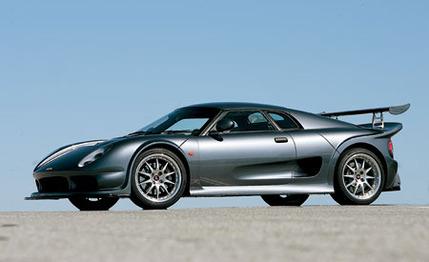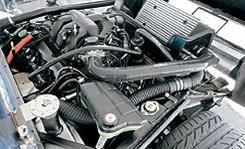
 Specialty File
Specialty File
Last fall we were breaking in a new road warrior and testing the Noble M12 at the same time. The car was very quick, and as we were at the staging area checking out the acceleration results, the 20-something new guy got a look. "Damn--that thing's stupid fast!" he blurted.
What was funny was how well that summed up the Noble. On one hand, it is a little, well, silly, since it's a South African-built $76,400 car of questionable lineage that doesn't pass U.S. emissions or crash regulations and gets registered for road use as a home-built kit. But on the other, it is one of the most satisfying cars we've ever driven, and it is ferociously fast, snapping to 60 in a minuscule 3.3 seconds, the same as a Ford GT.
"Actually, it's a component car," clarified Dean Rosen, the president of 1G Racing and importer of the Noble kit. "The car comes in two crates--one with the completely assembled car, and the other with the powertrain. You can join the two in about 40 hours." Maybe we were being a little harsh, since a lot of kit cars we've driven feel pretty good. But still, here in the U.S., the Noble is an obscure machine.
Lee Noble, a well-regarded auto designer and race-car driver, formed Noble Automotive Limited in Leicestershire, England, in 1998. In 1999, he released the M10, also built in South Africa. English car magazines swooned, praising the Noble for superb driving dynamics. One year later, a refined and prettier version of the M10, called the M12, appeared. In 2003, 1G Racing began importing about six each month to the U.S., approximately 30 percent of the total production.
The car certainly looks fierce, a sports car for sure, but it doesn't appear to be all that sophisticated. The chassis is made from steel tubes, and the body is fiberglass. The mid-mounted, twin-turbocharged 360-hp V-6 uses the engine block from a Ford Taurus, and the six-speed transmission is from the European Ford Mondeo.


When Rosen arrived with the car, we did the usual walk around looking for the fatal flaw that would illustrate this low-volume car was built by a small team of engineers with limited resources. None readily appeared. So we opened the door and got in.
A few things struck us as odd. Getting in was easy, and the cockpit, though narrow, offered plenty of legroom. "We have one customer who is six foot seven and weighs 250 pounds, and he fits fine," commented Rosen, and we believe him.
The radio--the only luxury feature besides the very effective air conditioning--is mounted on the dash in front of the passenger, out of reach of the driver. Strange. And the manual windows roll down only two-thirds of the way.